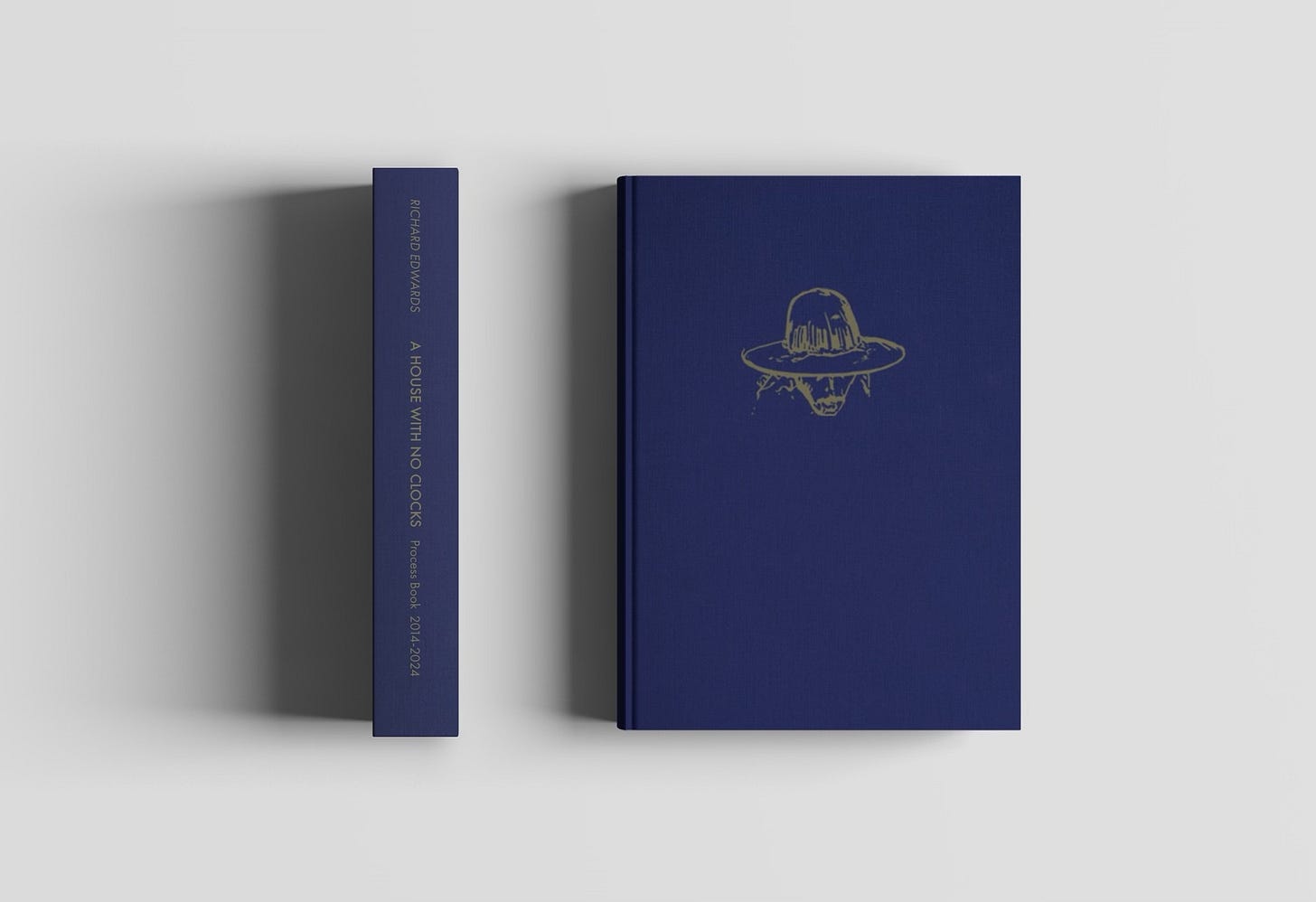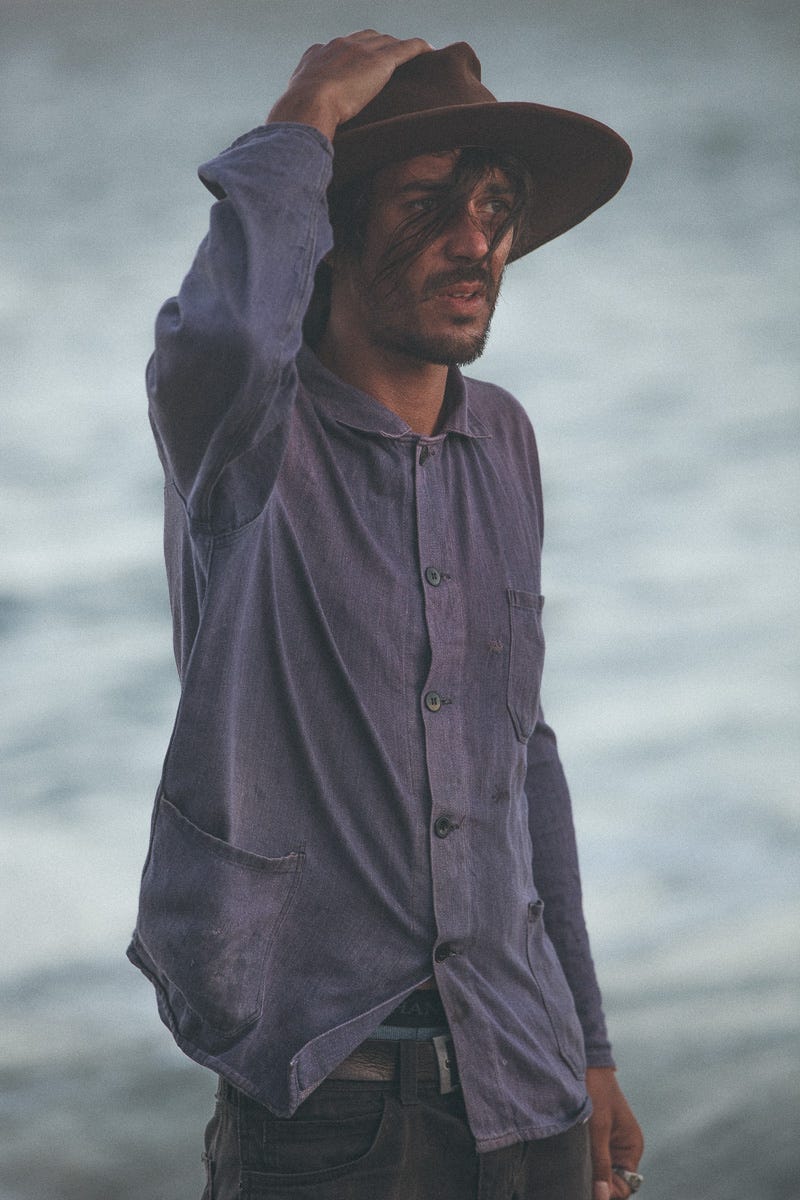A House With No Clocks - Justin Gautreau
A House With No Clocks review By Justin Gautreau April 2, 2024 Richard Edwards is someone who could write a tell-all book about the state of the music industry in the 21st century.
A House With No Clocks review
By Justin Gautreau
April 2, 2024
Richard Edwards is someone who could write a tell-all book about the state of the music industry in the 21st century. Back in 2008, when Epic Records decided not to release his band Margot and the Nuclear So and So’s record Animal, Edwards — in what has since become a bit of indie folklore — drunkenly took the redeye from Chicago to New York City, where he stormed the label’s office in the morning and threatened to leak the album himself (a confrontation that eventually resulted in the record cleverly titled Not Animal!). Now in the age of streaming, Edwards watches as his songs continue to be played millions of times while his royalty checks paradoxically continue to dwindle. “Spotify pays us about a buck per zillion streams and for some reason we don’t get to strike,” he once mentioned on his Patreon page. Such diminishing returns make Edwards wonder if recording and releasing new music is even worth it — financially, mentally, emotionally.
But instead of dealing with matters of unprecedented exploitation and shameless profit, Edwards’s first book opts for a more introspective and intimate display of his creative process over the past decade alongside the heartbreaking biographical contexts that informed it. A House With No Clocks, co-authored with Margot historian Matt Metzler, documents Edwards’s journey as a solo artist as he struggled with divorce, parenthood, and a rare stomach disease called C. Diff. Each chapter is dedicated to one of his solo albums, beginning with the The Devil is a Dog, an early version of 2017’s Lemon Cotton Candy Sunset, and finally coming full circle with the re-recording of Margot’s final album Slingshot to Heaven (the director’s cut, as Edwards describes it).
It is appropriate that A House With No Clocks begins in the hospital, a place associated with birth and death. In 2014, after he inexplicably began losing weight during what would be Margot’s final tour, Edwards made the difficult decision to cancel the remainder of shows and check himself into a hospital. The very first page of A House With No Clocks shows a photo of Edwards sitting in a hospital gown, his gray socks loose around his ankles with his hand resting on his stomach. He brushes hair from his face as he stares at something off camera, maybe listening to a doctor’s update or watching a basketball game on TV. The photo’s caption, scrawled in Edwards’s handwriting, simply reads: “A couple years ago I lost a lot of weight on tour.” He appears strikingly calm in the photo, somehow in control despite the chaos surrounding him. In hindsight, this particular hospital visit would mark the birth of Edwards’s solo career and the death of Margot and the Nuclear So and So’s.
As A House With No Clocks illustrates over and over, Edwards’s songwriting during these years can’t be separated from the physical pain he was enduring. Some of the book’s reprinted materials remind us that even his singing style had to change as a result of his stomach condition, from the Margot “growl” to a tender falsetto. Still, he continued to write and record songs because it was more painful to hold them in. In 2015, Edwards explained to an interviewer, “People don’t make good
records after a certain age, with certain exceptions, so I feel like I need to fucking make them. I need to make what they’re gonna put in my obituary. I don’t know if that’s a healthy way to make stuff, but that’s how I feel. Getting sick solidified it.” In a reprinted essay on the making of his first solo release, Lemon Cotton Candy Sunset, he voices a similar sentiment: “There’s a dirty secret among songwriters. Some records you make because it’s been a couple of years and you have some songs that you think are pretty good. Others burn a hole inside of you so hot that you’ll do anything to get them out. It’s these records over which you obsess — they make you crazy and you develop ulcers. They kill some people. Getting them right is more important than food or air. No sacrifice is too great when it comes to their completion.”
Because of its focus on the relationship between his body and his art, the book includes just as much material from Edwards’s personal life as it does his professional (if we can call it that), including a bittersweet card his young daughter drew for him during his first stomach surgery in 2017. In fact, much of A House With No Clocks has a scrapbook quality to it, filled with handwritten lyrics, photos, notebooks, essays, interviews, and sometimes even pages that feel more like a private diary entry. The level of vulnerability he offers here will invite readers to experience these songs in a more intimate way.
A House With No Clocks is therefore an absolute must for any fan of Edwards’s music, especially those who appreciate the tiny details that go into the songwriting process. The book includes drafts of lyrics accompanied by random scribbles of his mental state as he dealt with his illness. “Isolation situation / chronic pain changes the brain,” he writes on a paper bag next to the tracklist for Margot’s rarity boxset, Bride on the Boxcar (2015). Is this a potential title for something? A potential lyric? A random thought? Is there a difference? The layers are endless. Later, in the section on his album Ghost Electricity/Vampire Draw (2022), Edwards includes his first screenplay called The Age of Wilderness and Permission, perhaps a glimpse into the next steps in his career. Whatever the case, A House With No Clocks serves as an essential companion piece to the solo records, in some ways similar to the demo albums Edwards has released over the years. The book format (nearing 300 pages) in particular, though, allows Edwards to show his process in a whole new light. It is difficult to imagine hearing his solo albums the same way ever again.
At the same time, the book tells a much larger story about creativity and survival. A House With No Clocks reminds us of all the beauty and pain that goes into a song, something streaming services have made invisible, if not altogether obsolete. If the singer-songwriter is a dying breed, Edwards refuses to go down without a fight
.





